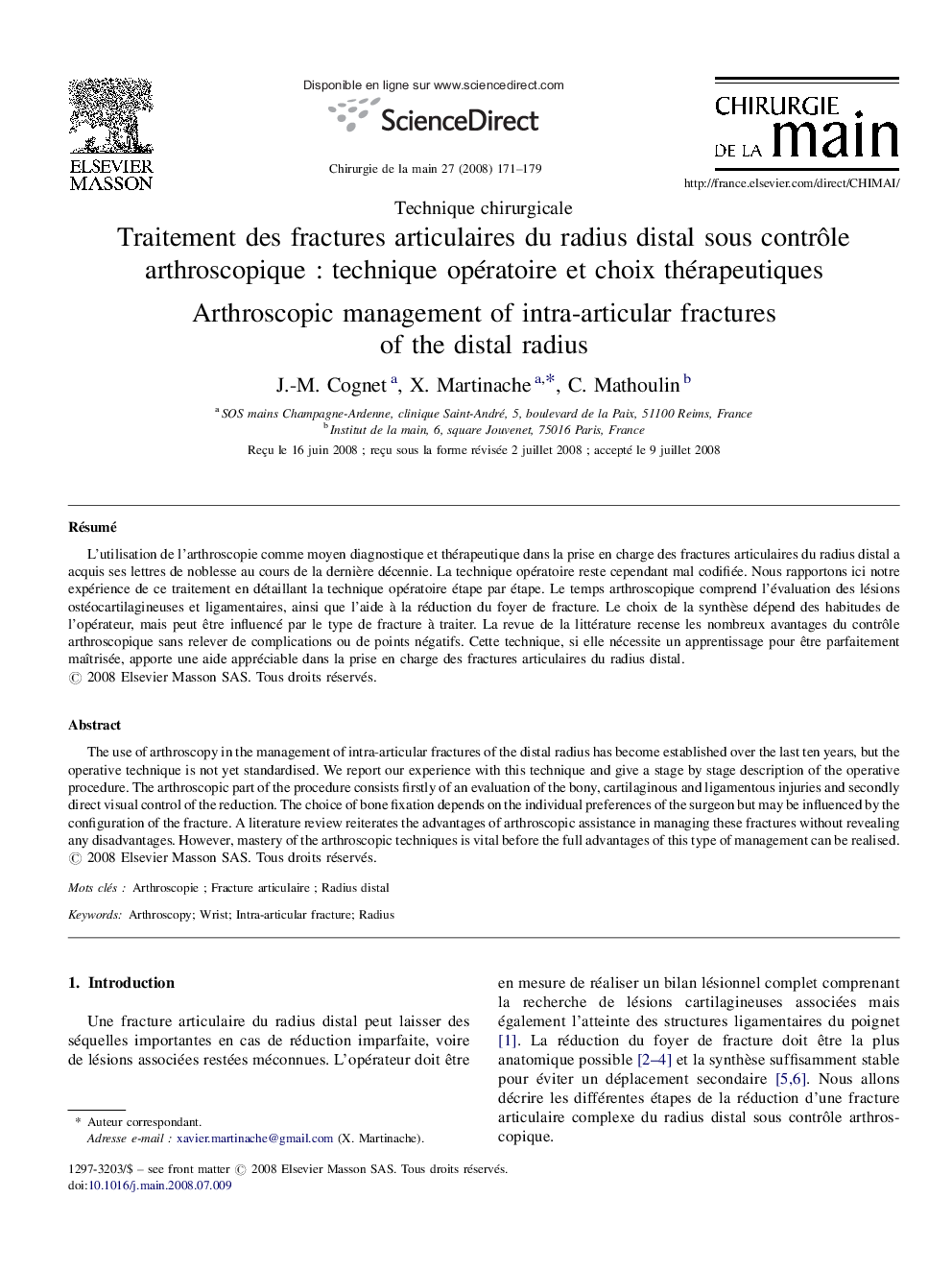| Article ID | Journal | Published Year | Pages | File Type |
|---|---|---|---|---|
| 4049861 | Chirurgie de la Main | 2008 | 9 Pages |
RésuméL’utilisation de l’arthroscopie comme moyen diagnostique et thérapeutique dans la prise en charge des fractures articulaires du radius distal a acquis ses lettres de noblesse au cours de la dernière décennie. La technique opératoire reste cependant mal codifiée. Nous rapportons ici notre expérience de ce traitement en détaillant la technique opératoire étape par étape. Le temps arthroscopique comprend l’évaluation des lésions ostéocartilagineuses et ligamentaires, ainsi que l’aide à la réduction du foyer de fracture. Le choix de la synthèse dépend des habitudes de l’opérateur, mais peut être influencé par le type de fracture à traiter. La revue de la littérature recense les nombreux avantages du contrôle arthroscopique sans relever de complications ou de points négatifs. Cette technique, si elle nécessite un apprentissage pour être parfaitement maîtrisée, apporte une aide appréciable dans la prise en charge des fractures articulaires du radius distal.
The use of arthroscopy in the management of intra-articular fractures of the distal radius has become established over the last ten years, but the operative technique is not yet standardised. We report our experience with this technique and give a stage by stage description of the operative procedure. The arthroscopic part of the procedure consists firstly of an evaluation of the bony, cartilaginous and ligamentous injuries and secondly direct visual control of the reduction. The choice of bone fixation depends on the individual preferences of the surgeon but may be influenced by the configuration of the fracture. A literature review reiterates the advantages of arthroscopic assistance in managing these fractures without revealing any disadvantages. However, mastery of the arthroscopic techniques is vital before the full advantages of this type of management can be realised.
